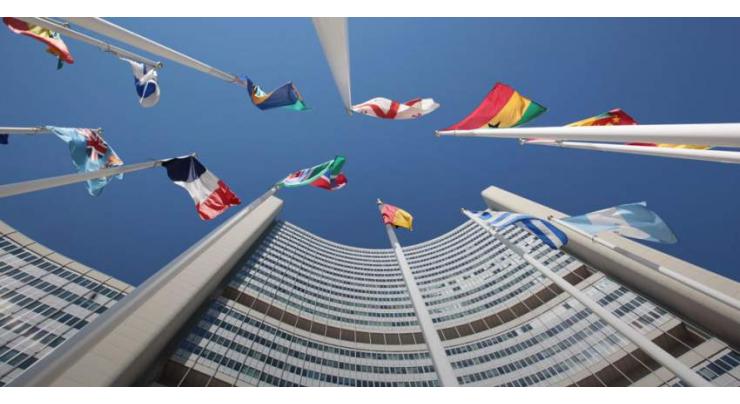
UN Human Trafficking Report Attributes Crises For Hindering Victim Identification
Mohammad Ali (@ChaudhryMAli88) Published January 24, 2023 | 11:45 PM

Fewer victims of people trafficking are being identified, even as the coronavirus pandemic and other crises are increasing their vulnerability, according to a new report released on Tuesday by the UN Office on Drugs and Crime (UNODC)
UNITED NATIONS, (APP - UrduPoint / Pakistan Point News - 24th Jan, 2023 ) : Fewer victims of people trafficking are being identified, even as the coronavirus pandemic and other crises are increasing their vulnerability, according to a new report released on Tuesday by the UN Office on Drugs and Crime (UNODC).
Globally, the number of victims detected fell by 11 per cent in 2020 from the previous year, driven by fewer detections in low and medium-income countries.
The number of convictions for trafficking offences also fell by 27 per cent over the same period, accelerating a longer-term trend registered by UNODC since 2017.
Sharper decreases were registered in South Asia (56 per cent), Central America and the Caribbean (54 per cent) and South America (46 per cent).
According to the report, despite reducing opportunities for traffickers to operate, the pandemic may have weakened law enforcement's capacity to detect victims.
We cannot allow crises to compound exploitation, UNODC Executive Director Ghada Waly, said in a statement.
The UN and the donor community need to support national authorities, most of all in developing countries, to respond to trafficking threats, and to identify and protect victims, especially in states of emergency.
The analysis also found that fewer cases of trafficking for sexual exploitation were detected during the pandemic, due to the closure of public spaces.
Related restrictions may have pushed this form of trafficking into more concealed and less safe locations, making it harder to identify victims.
Court case analysis featured in the report also shows that trafficking victims who are identified, mostly escape from traffickers on their own and are in effect self-rescued.
Forty-one per cent of victims escaped and reported to authorities on their own initiative compared to 28 per cent of victims who were located by law enforcement, and 11 per cent by members of the community and civil society.
The report said this was especially alarming considering many may not identify themselves as victims, or maybe too afraid to attempt an escape at all.
War and conflict offer opportunities for traffickers to exploit, with the war in Ukraine elevating trafficking risks for the millions displaced.
The report shows how most victims originate in and are trafficked to countries in Africa and the middle East.
There are also higher levels of impunity in Sub-Saharan Africa and South Asia. Countries in these regions convict fewer traffickers and detect fewer victims than the rest of the world.
At the same time, it said victims from these regions are identified in a wider range of destination countries than victims from other regions.
Examination of court cases found that female victims are subject to physical or extreme violence at hands of traffickers, at a rate three times higher than males.
Children are subjected to seizure and trafficking almost twice as often as adults, the report added.
Related Topics
Recent Stories

Iranian President arrives in Lahore today

Currency Rate In Pakistan - Dollar, Euro, Pound, Riyal Rates On 23 April 2024

Today Gold Rate in Pakistan 23 April 2024

Islam enlightened world with its teachings about knowledge: Dr Jamileh

Record London close as oil prices drop on easing Middle East fears

TV tower in Kharkiv struck as Russia captured village

LCCI language courses from May 1

Governor for service oriented governance in Punjab

Survivors tell of panic at C.Africa river boat disaster

Enrolment campaign, awareness walk held in Lower Chitral

“Say no to plastic- yes to tress” campaign kicks off in Attock

'PML-N secures people's trust in by-polls'
More Stories From World
-
Tensions flare at US universities over Gaza protests
33 minutes ago -
Taiwan hit by dozens of strong aftershocks from deadly quake
43 minutes ago -
Trump faces contempt hearing for comments on witnesses
52 minutes ago -
Malaysia military helicopters crash, killing 10
52 minutes ago -
China issues highest-level rainstorm warning in southern Guangdong: weather agency
52 minutes ago -
Asia hit hardest by climate, weather disasters in 2023:UN
52 minutes ago
-
Murray buzzer-beater lifts Nuggets over Lakers, Knicks stun Sixers
53 minutes ago -
Musk lashes Australian order demanding X remove stabbing videos
53 minutes ago -
In world first, Venice to trial day tickets
53 minutes ago -
Highest-level rainstorm warning issued in south China's Guangdong
53 minutes ago -
Rwandan LGBTQ fashion designer plans comeback after arrest
1 hour ago -
EU lawmakers to greenlight new spending rules
3 hours ago